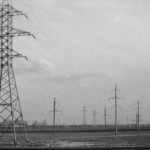The energy landscape in Australia is undergoing a significant transformation, and at the core of this evolution are the electrical engineers who are pioneering innovations in smart grid technology. As the demand for reliable, sustainable, and flexible energy solutions increases, smart grids have emerged as a foundational framework to address these needs. In this blog, we’ll explore how Australian electrical engineers are driving the smart grid revolution, overcoming key challenges, and shaping a more resilient, efficient, and sustainable future.
Understanding Smart Grids
A smart grid is an enhanced electrical network that integrates digital technology to allow real-time monitoring, management, and response to changes in electricity demand and supply. Unlike traditional grids, which are mostly one-directional, smart grids offer two-way communication between the utility and its consumers. This technology facilitates better demand response, improved reliability, increased renewable energy integration, and, ultimately, more sustainable energy practices.
In Australia, the deployment of smart grids aligns with the nation’s commitment to reducing carbon emissions and fostering renewable energy sources like wind and solar power. By 2030, Australia aims to achieve a renewable energy target of 82% of its National Electricity Market (NEM), which smart grids can help facilitate through efficient energy management and distribution.
The Role of Electrical Engineers in Smart Grid Development
Electrical engineers are at the heart of smart grid development, utilising their expertise to design, implement, and manage the systems that make these grids “smart.” Here are several ways they’re contributing:
1. Advanced Grid Infrastructure Design
Electrical engineers are critical in designing the infrastructure that supports smart grids. This includes integrating sensors, smart meters, advanced substations, and energy storage systems that enable real-time monitoring and control. In Australia, where electricity grids are spread across vast regions, engineers must design infrastructure that is both robust and adaptable to the unique geographical and environmental challenges present.
Engineers also play a role in developing microgrids, localised grids that can operate independently from the central network. In rural or isolated Australian communities, microgrids can improve access to reliable power and reduce reliance on long transmission lines, which are vulnerable to outages and high maintenance costs.
2. Renewable Energy Integration
Australia’s abundant solar and wind resources present unique opportunities and challenges for energy integration. Electrical engineers work to incorporate these intermittent energy sources into the grid, developing technologies that manage fluctuations in energy generation. Battery energy storage systems (BESS) are essential for stabilising these fluctuations, and engineers are leading efforts to integrate advanced BESS technology into the grid to store excess energy for use during peak demand or when renewable sources are unavailable.
Engineers are also pioneering methods to enhance grid flexibility, enabling it to seamlessly accommodate new sources of renewable energy as they are added. In regions like Western Australia, where solar energy generation has become a significant power source, smart grid solutions help maintain a stable supply despite daily and seasonal variability.
3. Demand Response and Load Balancing
With the growing use of electric vehicles (EVs) and increased electrification of appliances, demand on the grid is expected to surge. Electrical engineers design demand response solutions that help manage peak loads by incentivising consumers to adjust their energy usage. For instance, during times of high demand, users can shift their energy consumption through smart appliances or EV chargers, reducing the strain on the grid and stabilising energy distribution.
Load balancing, another essential component, enables engineers to optimise the grid’s performance by adjusting supply to match real-time demand. In Australia, demand response initiatives are particularly valuable during extreme weather events, which can strain the grid and increase the risk of blackouts.
4. Grid Cybersecurity
As grids become increasingly digital, cybersecurity is paramount. Engineers develop cybersecurity frameworks to protect the grid from cyber threats, which could disrupt operations, compromise data, or result in widespread outages. Australian electrical engineers are collaborating with cybersecurity experts to implement robust protocols that safeguard the grid’s critical infrastructure from threats.
With cyber attacks on energy systems rising globally, Australian engineers are focusing on resilience strategies to ensure a secure grid. This includes protecting data flows, securing digital assets, and ensuring that all control systems are fortified against unauthorised access, a particularly crucial measure for critical infrastructure such as electricity networks.
5. Data Analytics and Artificial Intelligence (AI)
Engineers are harnessing the power of data analytics and AI to create predictive maintenance solutions and optimise grid performance. These technologies allow for the analysis of massive datasets collected from various grid components, enabling engineers to anticipate potential failures and prevent outages before they occur. In a country like Australia, where extreme weather events are frequent, predictive maintenance is invaluable for protecting the grid.
AI-driven solutions also aid in forecasting energy demand and supply. For example, by analysing weather patterns, engineers can predict fluctuations in solar and wind energy generation, allowing for better planning and allocation of resources. This data-driven approach ensures that the grid can handle sudden changes in demand or generation, contributing to overall grid stability.
Overcoming Challenges
While the future of smart grids in Australia holds immense promise, it is not without challenges. Electrical engineers must navigate several obstacles, including:
- Integration of Legacy Systems: Australia’s existing grid infrastructure was built for traditional energy generation. Engineers are tasked with integrating new smart grid technology with older systems, ensuring compatibility and reliability.
- High Initial Costs: Deploying smart grid technology requires significant upfront investment. Engineers must design cost-effective solutions and work closely with policymakers and utility companies to secure funding and encourage investment in smart grid projects.
- Regulatory and Policy Barriers: As smart grids introduce new technologies and methods of energy distribution, regulatory frameworks need updating. Engineers often collaborate with government bodies to establish policies that support smart grid development and ensure they are aligned with national energy goals.
- Skilled Workforce Shortage: The growing demand for smart grid solutions requires a skilled workforce. There is a need for ongoing training and education to equip engineers with the knowledge and tools to design, manage, and secure smart grids effectively.
The Future of Smart Grids in Australia
The future of smart grids in Australia is bright, with government initiatives such as the Smart Energy Council promoting innovation and investment in smart grid technology. As Australia transitions towards a low-carbon future, smart grids will be instrumental in achieving this vision. Electrical engineers will play a central role, combining technical expertise with innovative thinking to overcome challenges and drive the deployment of smart grids nationwide.
For Australian businesses, communities, and consumers, the impact of smart grids will be profound. Beyond reducing emissions, these systems offer greater energy independence, lower costs, and a more resilient energy supply. Additionally, with the continued rise of digital transformation and big data, engineers are developing systems that are not only more responsive but also more user-centric, empowering Australians to actively participate in their energy consumption choices.
Electrical engineers are integral to the smart grid revolution, and in Australia, their role is more critical than ever. By advancing infrastructure, integrating renewable energy, implementing demand response measures, enhancing cybersecurity, and leveraging AI, engineers are setting the stage for a cleaner, more efficient, and resilient energy future. Through their innovations, Australia is poised to lead in sustainable energy practices, demonstrating how smart grids can drive a better tomorrow for the planet and its people.
As we continue this path, the contributions of electrical engineers will undoubtedly shape the success of Australia’s energy transition, creating a smart grid that serves the nation’s unique needs and ambitions.






